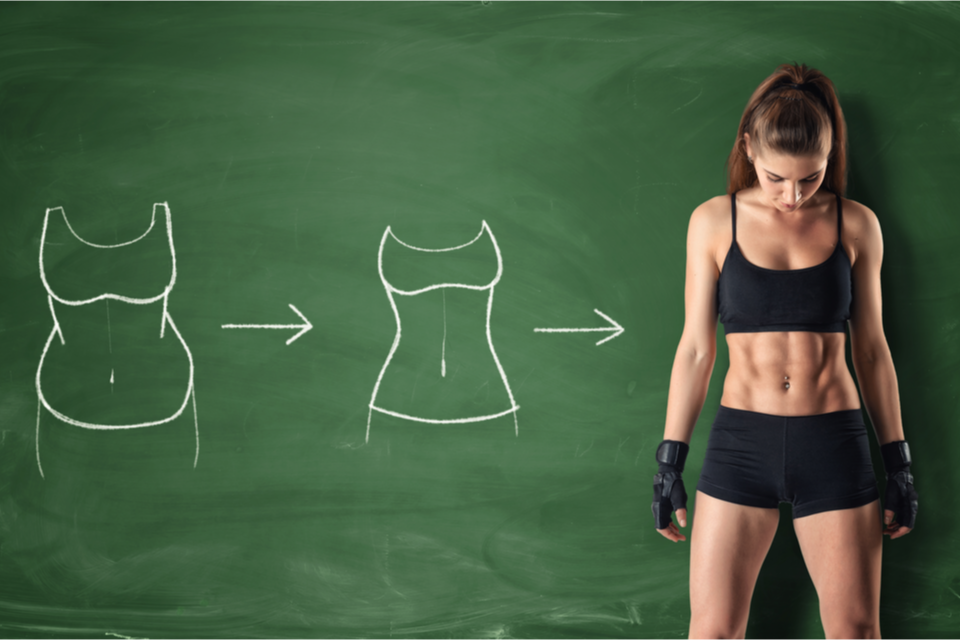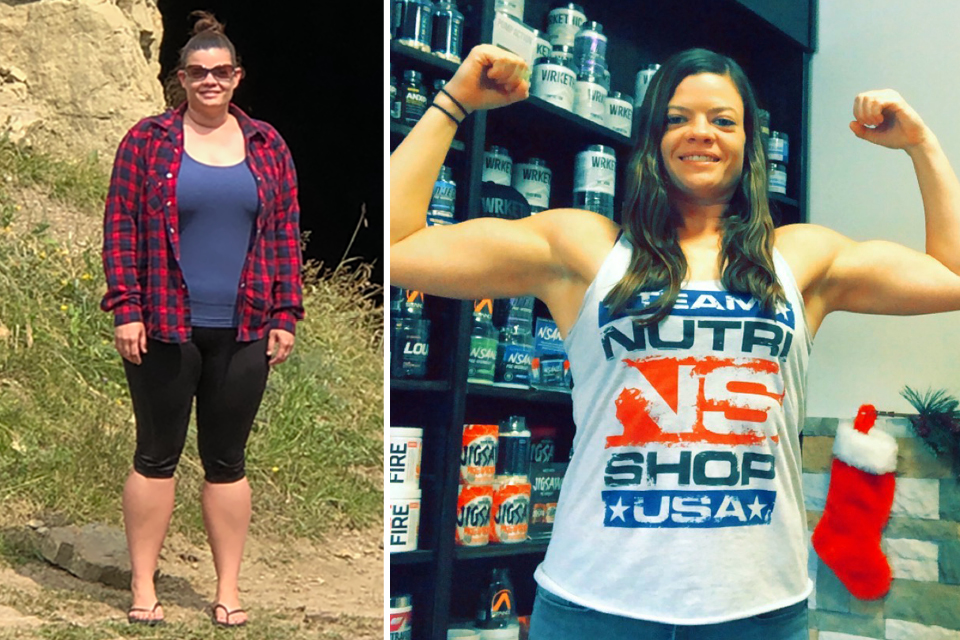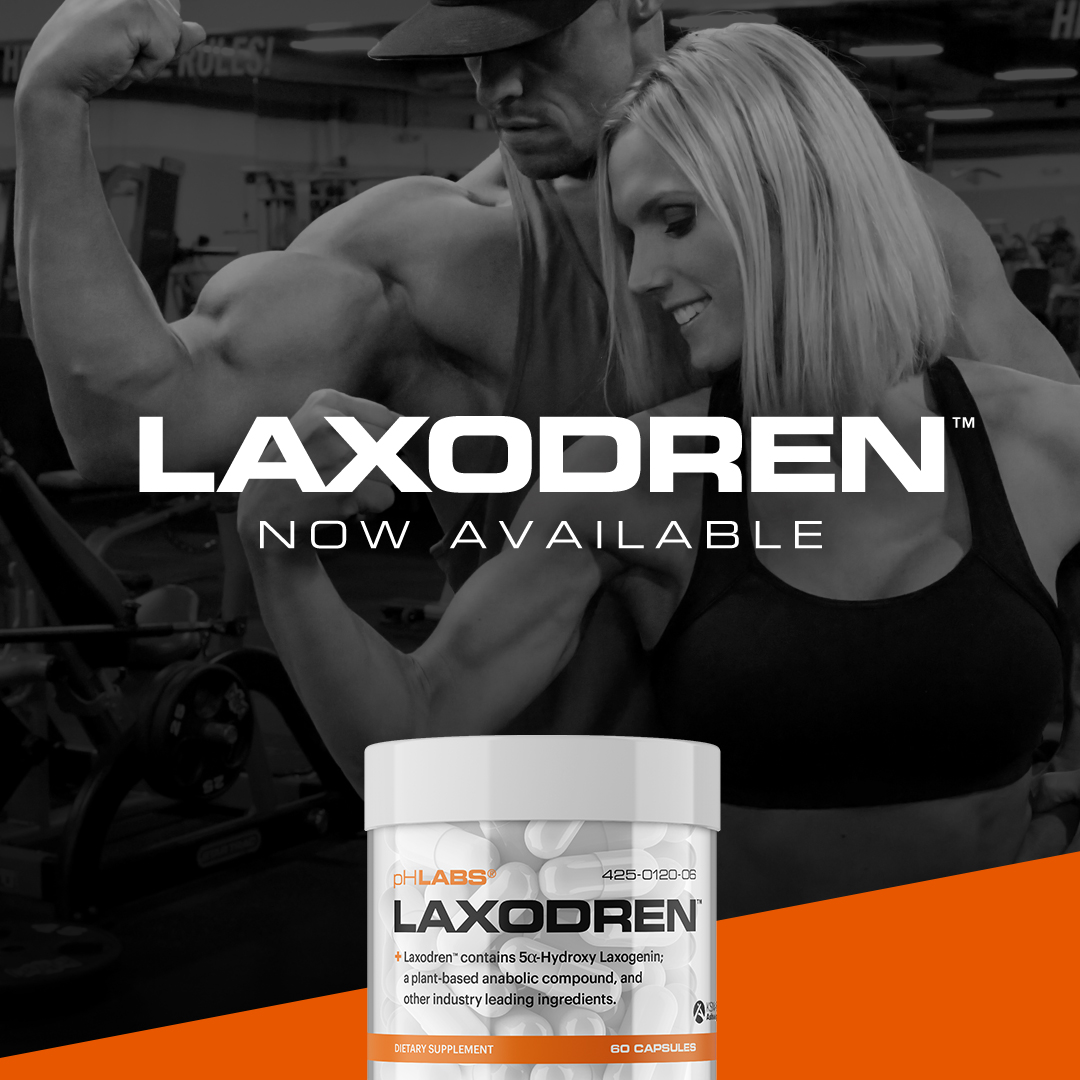Most people who embark on a fitness journey aim to cut body fat and hit a lower number on the scale. While the scale may seem like the best way to track your progress, it only measures one small piece. And if that number is not something that you’re thrilled with, you may not be as motivated to keep going in your fitness journey.
The scale is, in fact, the single most powerful mood-shifter!
Even though your weight allows you to track whether you are losing or gaining weight, it does not really give you an idea of the bigger picture. So let’s take that number on the scale out of the equation. If your goal is to feel stronger and fitter, look leaner, get rid of excess fat, or just optimize your health, switching your focus towards body recomposition instead may be a better approach.
What is Body Recomposition?
Body recomposition is a fitness goal that focuses on optimizing body composition by losing excess fat while building more lean muscle. It is a lifestyle goal in which fitness and nutrition techniques lead to healthy changes in fat to muscle ratio. It essentially compares the amount of fat and fat-free mass (muscle, bone, and water) your body contains. Someone focused on body recomposition might set their goals to a lower body fat percentage rather than focusing on weight alone.
Traditionally, when people embark on weight-loss methods, they drastically cut calories and increase cardiovascular exercise to expend more energy (burn more calories). While this will result in weight loss, you can also lose muscle mass. However, if you focus on a body recomposition routine, you’ll be able to preserve and build muscle while losing fat simultaneously.
Modifications in exercise and diet are needed to reach this goal, and they are different for everyone. The best part about having body recomposition as a goal is that it benefits everyone regardless of their starting point.

How To Lose Fat
Having excess body fat can negatively impact health. It can increase the risk of many chronic diseases and affect emotional well-being and body image.
To cut excess fat, a person must be in a calorie deficiency. This can be achieved by consuming fewer calories or expending more energy (aka burning more calories). However, when it comes to preserving muscle mass, there is a vast disadvantage when an individual consumes an extremely low number of calories through dieting or engages in hours of cardiovascular exercise.
To lose fat while building muscle is finding the right balance between diet and exercise. Ideally, you’ll want to decrease your calorie intake moderately while incorporating strength-training exercises that build muscle mass into your routine.
Nutrition and Fat Loss
Nutrition is essential in any and all goals, but diet quality definitely matters when losing fat. Focusing on a whole-food, nutrient-dense diet that consists of fresh produce, complex carbohydrates, healthy fats, and protein is best for everyone.
Also, consuming a high-protein diet has been proven to reduce fat while preserving lean body mass because protein is needed in the body to build and repair tissues. A review of six studies shows that a higher protein intake is necessary to lose fat while maintaining muscle. The suggested amount for protein intake is at least 0.73 grams per pound of body weight to improve your body composition. Depending on individual factors, like body size, our body can only metabolize about 25 to 40 grams of protein at a time. It is recommended to distribute protein sources evenly throughout the day by including protein in every meal and snack.
Pro Tip: ALWAYS prioritize protein! If you’re having a hard time consuming enough protein, supplement your nutrition with a protein shake.
Other Ways To Reduce Excess Fat
Besides increasing protein intake and calorie expenditure, there are other methods for losing body fat:
- Cut out processed foods: Foods like fast food, candy, baked goods, etc., are often highly processed. Processed foods often are less nutritious and are designed to be “highly palatable,” which means you’re likely to eat more of them. The more you eat processed foods, the more calories with less nutrition you’ll be consuming, resulting in excess body fat. Pro Tip: When shopping, look for foods with five ingredients or less, AND make sure you can pronounce all the ingredients!
- Eat the rainbow: Health experts recommend eating at least 4½ cups of fruits and veggies every day. Fruits and vegetables provide nutritional value (vitamins, minerals, antioxidants, fiber, water). They are also free from additives or other artificial substances. Additionally, it will help increase fullness and lower levels of insulin, a hormone that promotes fat storage.
- Increase fiber intake: Eating more fiber-rich foods can help decrease body fat, especially in the belly area. A study at Brigham Young University showed that people who increased their fiber intake generally lost weight compared to those who decreased intake.
- Try interval training: Interval training is bursts of very high intensity followed by a short rest. Most training sessions are about 20-30 minutes. Not only does it optimize fat burning during a short session, it actually keeps your metabolism elevated long after you’ve stopped. This is due to a phenomenon called EPOC (excess post-exercise oxygen consumption).
Up until you turn 30, your muscles grow larger and stronger. However, there comes a time in your 30s when you start to lose muscle mass and function. Since muscle mass naturally declines with age, you have to use it or lose it, and maintaining or gaining muscle is critical for body recomposition. Therefore, combining a healthy, lean-body-mass-promoting diet with a fitness routine that supports muscle growth and maintenance is vital.

Best Exercises for Gaining Muscle
A certain level of stress must be placed on the body’s muscles and joints to create adaptations to allow for lean muscle growth. Strength training basically breaks the muscles down and then allows them to rest and recover, which is when they grow.
Lifting light, easy weights is typically not enough stress to elicit strength gains, and the more you do a particular workout, your body adapts. So, those 5-pound shoulder presses may have been challenging last month, but now, since your body has adapted, they are easier, and you are burning fewer calories performing that same move.
Strength training involves using resistance exercises (like dumbbells, barbells, bands) to build strength and muscle mass. If body recomposition is your goal, experts recommend resistance training at least two days per week because it’s more effective at maximizing muscle growth than training just once per week.
Studies show that the perfect fitness combination for body recomposition is doing strength training exercises for two to three days per week with one to two days per week of interval training. It leads to fat loss and increased muscle mass and strength.
The Bottom Line
When embarking on a health journey, prioritize body recomposition because it stresses the importance of gaining muscle while losing fat. Focusing on those two components may decrease your risk of chronic disease and boost metabolism.
Nutrition is critical regardless of any goal but consuming at least 0.73 grams per pound of body weight of protein per day helps preserve lean muscle mass. Additionally, you will want to complete strength training at least twice per week and sprinkle in some interval training. The best part about body recomposition methods is that everyone can use them, from elite athletes to people looking for a healthy way to get back into shape.
**Always consult with your health care provider before taking any new supplements or starting any nutrition, diet, exercise, fitness, or wellness program.
-------------------------
About the Author: Brittinie Wick is an Air Force Veteran turned Health and Fitness Coach who founded Brittinie Wick Fitness. Her mission is to empower all women, through fitness and nutrition, to gain confidence, lose weight, and celebrate the feeling of strong and sexy. Grab her “Healthy at Every Age” guide! This ebook is aimed at people just like you, who want to live their BEST, MOST ACTIVE life, starting TODAY and continuing deep into the future!









